Spring of 2016 has not been kind to television viewers. Between The 100, Game of Thrones, and the numerous deaths of LGBT women (dubbed the Spring Slaughter), we have a mountain of dead bodies to bury. Almost 90 named characters are dead, many of them minorities, children, and other vulnerable characters. The general atmosphere in many fandoms I’m a part of is one of exhaustion tinged with boredom. In other words, acedia.
A Brief Recap: What is Acedia?
In my previous essay, I mention that acedia is malaise generated when life seems to stretch out ahead with nothing to break the monotony of repetition. In society, the bombardment of global and local violence can lead one to feel that nothing matters beyond one’s personal sphere of influence. If it doesn’t affect me, it isn’t important enough to care about. This stems from overstimulation; there is simply too much to care about. Rather than exhaust ourselves, our very souls seem to shut down. We can’t care about everything, so it’s better to care about nothing, or only those things that affect “me”.
A similar numbing effect takes place when there is too much violence within a particular narrative, all delivered in the same tone. Call it darkness induced apathy if you will; I call it narrative acedia1. The Westeros of David Benioff and David Weiss and their team (henceforth ‘D&D’) is a Grimdark place, full of violence and brutality with little hope or light in it to break through the heavy doom clouds that ever hang on the horizon. This thick cloud of monotonous hopelessness seems to seep into the audience itself, making it difficult to invest or care in the story because it will never change for the better.
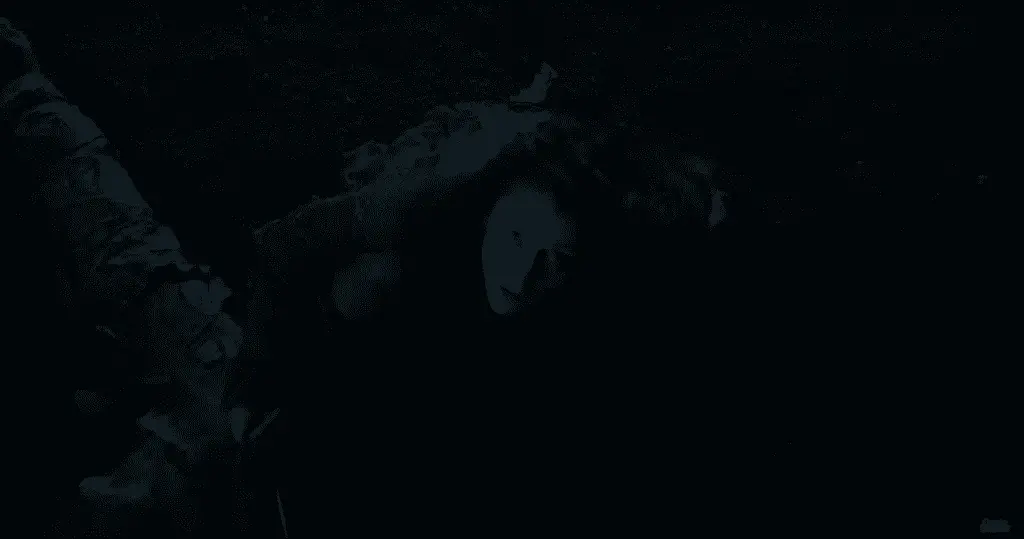
The building up of characters only to hurt or kill them and inflict maximum pain on the audience, I labeled narrative sadism. D&D have created a world that on the one hand dulls the emotional impact of the atrocities they depict, and punishes you for caring on the other. And all of this was something I wrote before season 6 aired. As season 6 has progressed, these issues have only gotten worse.
The Spread of Narrative Acedia
But Game of Thrones is not alone in this particular combination of narrative acedia and sadism. I watched it play out on The 100. This season had more onscreen deaths of primary and secondary characters than every other season combined. The shoddy attempt at humanizing Charles Pike only to kill him off in the season finale smacks of narrative sadism, as does the poor retcon that was the ALIE (anti-) climax. Like D&D, Rothenberg attempted to manipulate the audience into feeling positive emotions about two characters (Pike and ALIE), only to kill them off soon afterward.
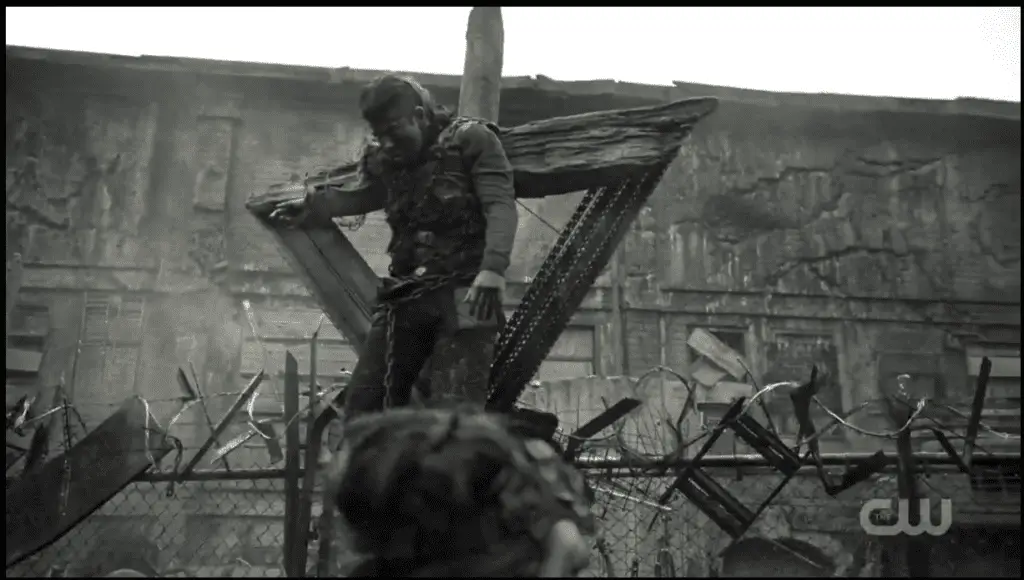
The transformation of the Grounders from a complex, nuanced society that is more than just violence personified (season 2) into the caricature of brutal savages they became at the end of this season has the same impact. The audience invested in the Grounders as human beings only to be punished for caring about them. The two most prominent Grounder characters were killed on screen (Lexa and Lincoln) and a third tortured off screen (Indra).
The body count for both shows this past season is quite high (46+ for Game of Thrones, 24 for The 100). The season 6 Game of Thrones finale alone had 11 named character deaths; how do you even begin to process that much death in the span of an hour? How are any of those deaths supposed to be meaningful, dramatic, or moving when there are just so many?
A high body count wasn’t enough. Both shows gave us deaths that I call visually gratuitous. Take Lincoln and Rickon. While these two characters could not be more different from each other, the way their deaths were filmed struck me as similar. Both were given a prolonged death sequence that added little tension to the narrative. Lingering shots of the death and dead bodies contrast sharply with the lack of screen time given each of them this season while they were alive. It felt as if both of them were brought back into the narrative only to die brutally and lingeringly on screen.
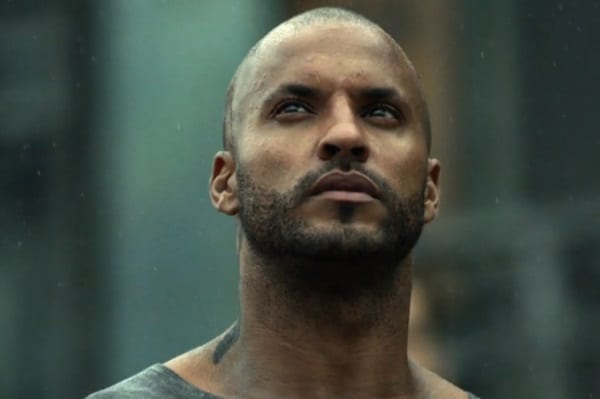
As with Shireen, both Lincoln and Rickon’s deaths were deemed acceptable to show in this way despite the problematic implications. Lincoln was a black male, wrongfully imprisoned, chained, and forced to kneel in the mud. He was then shot execution style by another black male as the camera caressed his dead and broken body. While his killer looks on taunting, Rickon, a child of 11, ran for his life as arrows flew at him for over a minute. The chase ended with him shot in the back and the camera zooming in on his face as he bled out.
The way a death is filmed says as much as the death itself. With Lincoln, the prolonged death scene is humiliating. It is done to degrade his character as much as possible. The proud, skilled Grounder warrior the audience has grown to love dies chained amidst the mud and muck rather than on a battlefield. Rickon isn’t even given that much; his prolonged death is more about Jon than it is about Rickon, just as Shireen’s burning was more about Stannis, Selyse, Melisandre, and Davos. Long death scenes of children are used as a plot device to spur other characters into action.
But death is not meaningful just by existing. Nonsensical or pointless deaths do not have emotional resonance when there is so much violence already present in the story. Lincoln’s humiliating death moves the audience to anger at the writers for such a disservice to his character (and the actor). It actually takes the audience outside of the narrative instead of investing them in it. Likewise, Rickon and Shireen’s pointlessly prolonged death to service the main characters does not Shock™, it numbs.
The randomness of death cannot reinforce the fragility of life when shows like these are already steeped in death and brutality. Rickon, Tommen, Margaery, Loras, the Waif, Lady Crane—they’re just more bodies. By this point in Game of Thrones, the audience has already become inured to violence. More nonsensical deaths are apt to lead to more apathy (or straight to mockery of the poor writing that gave us the death) rather than existential questioning of the meaning or beauty of life.
When the random death occurs to a highly valued minority character like Lexa or Lincoln, the backlash has been rightly directed against the writers for their poor handling of sensitive issues. In that, the The 100 fandom has yet to be lulled into narrative acedia as fully as certain subsets of the Game of Thrones fandom has.
The reaction of LGBT fans over Lexa’s death reminds us that the violent death of children ought to raise outrage as well. But it seems children dying on Game of Thrones is just par for the course. Within only six seasons Game of Thrones has managed to inure its audience to violence to the point that a baby eaten alive by dogs raises not even a murmur of discontent.
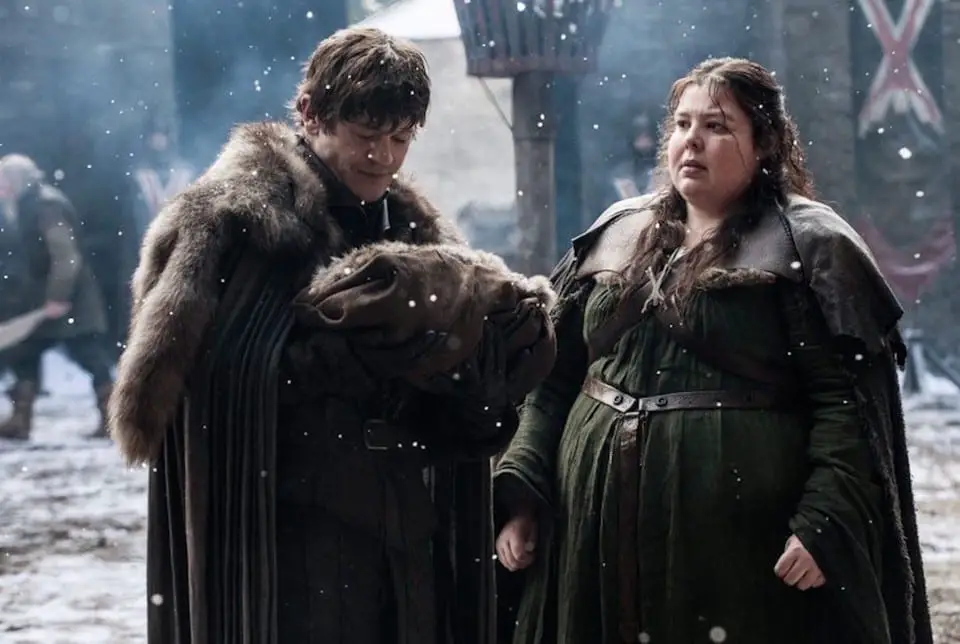
Instead, Game of Thrones has been lauded this season as a feminist masterpiece for its avoidance of violence against women (an issue Kylie tackled yesterday). Fewer female bodies were violated on screen, yet it has merely replaced violence against women with violence against children and the disabled (i.e., Hodor). Hodor’s sacrifice is called Noble™ and Meaningful™, but is it? It might be noble to die protecting one’s friends, but since the wights catch up to Bran and Meera in the end, it’s everything but meaningful. The origins of a disabled man’s injury is treated as a Shocking Twist™ rather than with delicacy, and his death—like that of Shireen and Lincoln—amounts to nothing more than a plot point.
In a way, it’s not all that different from the overwhelming violence against minorities on The 100. Game of Thrones has not singled out women, people of color, and LGBT characters the way The 100 has, though there are characters that fit that description who have died on GoT this season (e.g. Loras, Doran, Hotah, Trystane, Walda, the Dothraki, and Margaery). What is true of both of these shows is that it is the most vulnerable people who are dying left and right. So much for ‘anyone can die’.
Acedia and Revenge
Whether it be Emerson’s quest for vengeance for Mt. Weather, Bellamy’s revenge-fueled massacre of hundreds of Grounders, Cersei’s desire for revenge against the patriarchy, Brienne’s revenge for Renly, or Sansa’s brutal revenge against Ramsay, we have not lacked for revenge driven plots this spring. It’s the Brave™ story to tell right now, apparently. But what does revenge have to do with acedia, you ask? Like violence, the more we see revenge on our screens, the more the audience is inured to it and the more it loses its storytelling power.
I’m not denying that revenge can be cathartic. There is something truly satisfying as a viewer when you see the villain get their comeuppance. When done well and in small doses, revenge can be a powerful emotional experience for the viewer. Who didn’t cheer when Inigo Montoya finally kills the man who murdered his father? I unabashedly love Gladiator and when Commodus finally dies at Maximus’ hand at the end? I feel the rush as much as anyone.
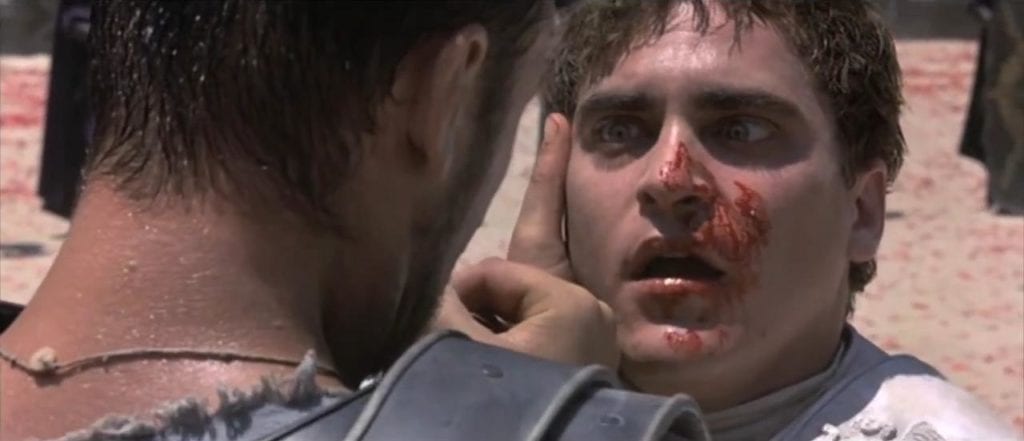
Even revenge against one’s rapist can be cathartic, just watch Jessica Jones. But when literally every single character’s motivation is revenge, it loses all narrative power to compel the audience to feel catharsis. Spending so much time on Ramsay’s own brutality in episodes 5-6 does not automatically make his death more cathartic, especially when the writers have attempted to humanize him via his troubled relationship with his father. His death is just more senseless brutality, more audience induced apathy from overexposure to revenge filled violence. The audience can no more feasibly care about everyone’s revenge than it can care about everyone’s death.
Revenge need not mean violence either. Revenge can be losing one’s station, friends, or wealth. Revenge can be mental or emotional suffering rather than physical pain and death. Justice, even a just death, can even be it’s own form of revenge. That revenge means brutal violence and suffering for writers like D&D and Jason Rothenberg is telling.
And what is the message of revenge-driven violence? Ramsay Bolton, a psychopath, enjoyed watching his stepmother and baby brother eaten alive by his dogs. This is undeniably Wrong. Ramsay is a villain after all. When Sansa Stark gets revenge by feeding him to his own dogs, we are supposed to cheer her on. But why? Objectively, she’s done the very thing that he has done. The act itself is no different, only the person performing it.
The message, then, is that brutality is acceptable as long as the ‘right’ person is doing it for the ‘right’ reasons, namely, a protagonist doing it for revenge. It’s remarkably akin to what we saw in The 100 this season. ALIE using violence to negate people’s choice is wrong, but Clarke doing it is okay since she’s trying to save everyone. Only ALIE was trying to do that too, so…who is in the wrong here? Lexa betraying her agreement with Skaikru to save her people is wrong, but Bellamy betraying the cease-fire with the Grounders to mass murder them is okay because he was angry and hurt.
I am uncomfortable with the implication that using a living human being as dog food is acceptable so long as one does it for the ‘right reasons’. This kind of moral relativism—where a protagonist committing an atrocity is Right but an antagonist committing the same atrocity is Wrong—is the result of poor writing. They simultaneously want a moral framework that determines Good Guys from Bad Guys but are unwilling to commit to the necessary implication that actions are also moral or immoral. Instead, The Right Thing To Do™ amounts to whatever the hero decides to do.
This isn’t to say that Martin’s books are not morally grey, they are. Jaime seems to genuinely love Cersei in the books. His relationship with Cersei is also all kinds of messed up for both of them. Arya’s journey from frightened, angry girl to emotionless killer is meant to make us uncomfortable even as it fulfills a desire to see the Stark family avenged for its losses.
Very few of Martin’s characters (including the protagonists) are entirely black or white. At the same time, there are morally objectionable actions regardless of who is committing them. Gregor Clegane rapes an innkeeper’s daughter then gives her to his men. This is wrong. Tyrion rapes a sex slave. Tyrion’s rape of the slave is not magically made acceptable because Tyrion, one of the protagonists, is doing it. It’s still morally wrong.
Compare this to what D&D do with Sansa killing Ramsay. Her act of revenge is not condemned by the narrative, it is praised. This is the culmination of her empowerment arc for the past season and a half. It is not an attempt at moral ambiguity or a ‘turn to the dark side.’ It’s the opposite. By feeding her rapists to his own dogs and enjoying it, Sansa has proved herself to be a “woman on top” who is now worthy to play the game of thrones.

The only difference between protagonists and villains, then, is that the narrative tells us whose actions are acceptable. We cheer for Sansa because the narrative tells us she’s a Good Guy and Ramsay a Bad Guy the same way we accept Clarke’s actions but not ALIE’s. Violence itself is not wrong or problematic, it’s the person doing it. This attitude contributes to acedia. When violence begets more violence without differentiation, moral relativism feels more like perversity.
Acedia and the Spring Slaughter
Everyone who comes to Fandom Following is undoubtedly familiar with the repeated deaths of LGBT women that has marked the spring of 2016, a.k.a. the Spring Slaughter. In span of 7 months, no less than 19 LGBT women have died onscreen(Spoilers): Zora (The Shannara Chronicles), Rose (Jane the Virgin), Carla (Code Black), Julie Mao (The Expanse), Ash (Janet King), Lexa (The 100), Kira (The Magicians), Denise (The Walking Dead), Nora and Mary Louise (The Vampire Diaries), Mimi Whiteman (Empire), Camilla (Empire), Cara Thomas (Marcella), Pamela Clayborne (Saints & Sinners), Felicity (The Catch), Bridey (The Familiy), Mayfair (Blindspot), Root (Person of Interest), and Poussey Washington (Orange is the New Black).
On top of the death of these women you have queerbaiting. The LGBT community is desperate for representation given the dearth of LGBT female characters on television. GLAAD reported 4% of regular characters on primetime television identified as gay, lesbian, or bisexual. Producers use this lack of representation to garner viewers by teasing a LGBT romance that they may or may not follow through on. Jason Rothenberg’s manipulation of the LGBT fandom is a particularly egregious use of queerbaiting that ultimately ended in Lexa’s death.
Not that Game of Thrones has handled female LGBT issues well either. Sansa and Margaery were used for queerbating purposes in seasons 3-4, as were Dany/Yara this season. While Dany/Yara might look empowered because the wlw fandom lacks representation, how empowered can it really be when your current f/f ship (and a queerbait-y one at that) is made up of a woman who verbally abuses her brother out of his PTSD and another who is variously emotionless, brutal, and incompetent most of the time she’s on screen? Two savage women is not an empowered f/f storyline, especially when it is no more than queerbait. Is there anyone out there who believes that Dany/Yara is endgame or even that we’ll get a f/f sex scene?
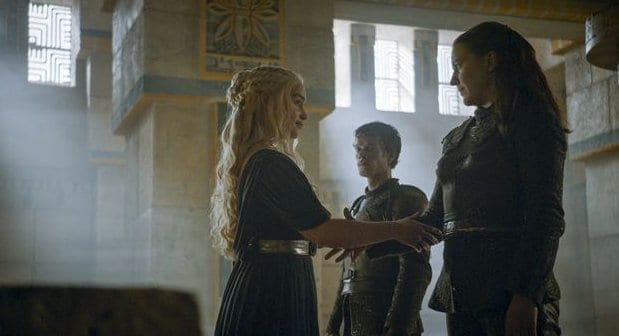
Chances are, Yara will probably die, which will mean yet another dead lesbian on a show that killed off the only two canon gay characters (Loras and Renly) and a possibly/queerbaited bisexual woman (Margaery). They hyper-sexualized the canon bisexual characters (Oberyn and Ellaria), but neglected to include the actual canon f/f relationships and scenes (Cersei/Taena, Dany/Irri, and Lady Nym/the Fowler twins). The only f/f ships on Game of Thrones are non-canon and queerbait to boot. This is also the show where Brienne of Tarth must be a lesbian because she’s ‘manly’.
With the death of so many LGBT women, the blatant use of queerbaiting, and the under-representation of this minority group on TV, you would think that so much death would lead to the kind of violence induced malaise I’ve been discussing. It’s a reasonable reaction, to be honest. When you see so little of yourself on television, and most of it ends in death and tragedy, tuning out is not unreasonable. Only that isn’t what has happened.
Rather than apathy, the deaths of these women has sparked a revolution. Fueled by anger born out of underrepresentation and frustration with the Bury Your Gays trope , LGBT fans have donated money to the Trevor Project, funded the production of billboards decrying violence against LGBT characters, and started a con dedicated to LGBT women in media. While there is exhaustion because of so many dead female LGBT characters, there is also righteous indignation. Rather than Hypnos, the LGBT fandom has called upon Nike to come to their side and give them justice. They are tired of the injustice and violence, and they have turned it to productivity rather than malaise. They have steadfastly refused to go gentle into that good night.
Conclusion
In a world beset by acedia, it is easy to give into the numbing effects of violence coupled with consumerism and the distraction of busyness. There is too much in the world that presses us to care, and we can’t. So we watch shows that feed our acedia by numbing us further with Shock and Awe™ tactics, endless and meaningless deaths, and the brutalization of characters that belong to vulnerable and minority communities. These stories both numb us and punish us for caring. Is it small wonder then that so many fans are exhausted?
Yet there is light still. The Spring Slaughter has traumatized many young viewers, and it has mobilized them. They are a beacon of hope in this dark world, a refusal to give into acedia’s numbing lethargy. The Spring Slaughter has sparked a rebellion against the gross storytelling of LGBT characters in media. Though some might use it to guilt others for their lack of care, I choose to see it as a flagship of inspiration. We, the audience, need not accept violence with apathy. We can care, if we dare to, and we can use our anger to change media for the better. We need not slink back into our caves, we can rally our forces and face acedia head on. Narrative acedia need not be the end of the road, it can instead be a beginning.
Images courtesy of HBO and The CW.
1. Acedia as it is specifically discussed by the desert fathers of the Christian monastic tradition is individual, rather than societal. Norris discusses acedia as a societal failing in her book Acedia and Me, which I briefly discussed in my first essay. The kind of acedia I’m talking about here is linked to societal acedia, particularly the way that media inures us to violence and numbs us from caring due to oversaturation. It leads to an inability to emotionally invest in the characters or narrative and emotionally, a kind of malaise or boredom. I’d call it ‘media acedia’ but that seems a bit too rhyme-y to me, so I chose narrative acedia.↩

